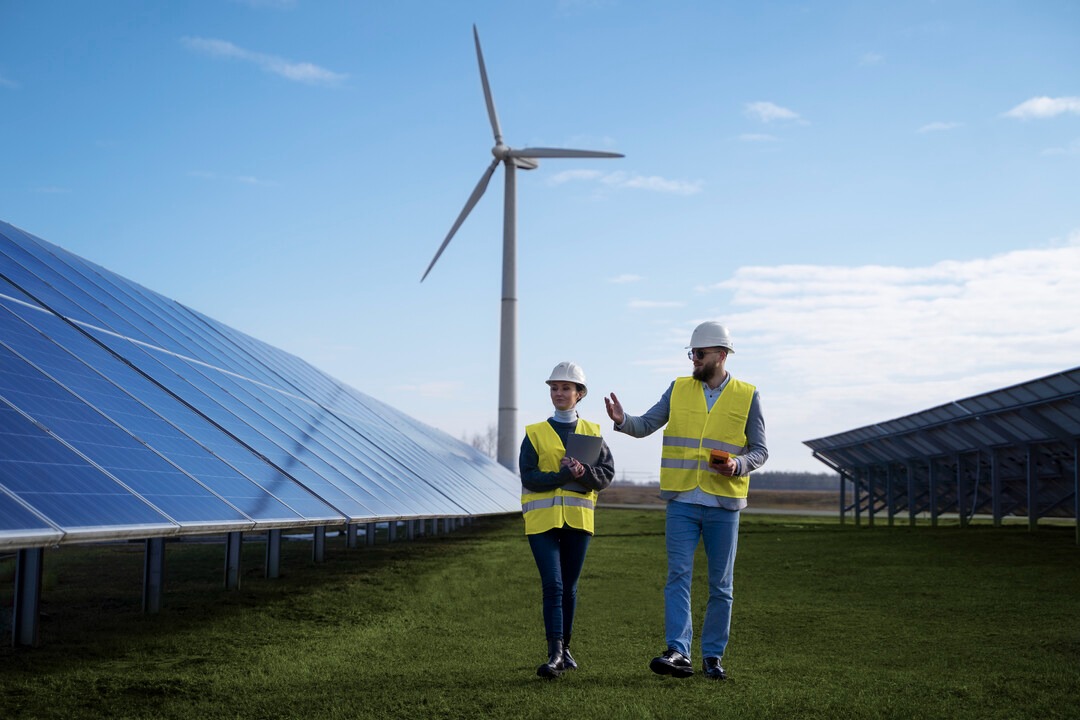As we step into 2023, the world of renewable energy is poised for groundbreaking innovations that will reshape the industry. Over the past decade, we have witnessed remarkable advancements in renewable energy technologies, from solar panels to wind turbines, and this year promises to be no different. In this article, we will explore the latest trends and innovations that are set to redefine the landscape of renewable energy in 2023.
Solar Power: The Reign of Perovskite Solar Cells
Solar power has been a cornerstone of the renewable energy revolution, and in 2023, we are on the brink of a significant breakthrough with perovskite solar cells. These cells, known for their remarkable efficiency and lower production costs, have been the focus of extensive research and development efforts. Perovskite solar cells have the potential to outperform traditional silicon-based cells, making solar energy more accessible and affordable.
One of the key advantages of perovskite solar cells is their versatility. They can be integrated into various surfaces, such as windows, facades, and even clothing, opening up new possibilities for energy generation. Moreover, the rapid pace of innovation in perovskite materials promises further improvements in efficiency and durability, making solar energy a more reliable source for consumers and industries alike.
Wind Power: Harnessing Offshore Winds
Wind power has been a reliable source of renewable energy for years, but in 2023, we are witnessing a shift towards harnessing offshore winds. Offshore wind farms are gaining popularity due to their potential for higher energy generation and reduced visual impact on landscapes. With advancements in turbine design and installation techniques, these offshore projects are becoming increasingly feasible.
One of the notable trends in offshore wind technology is the development of floating wind turbines. Unlike traditional fixed turbines, floating turbines can be deployed in deeper waters, where wind speeds are often higher and more consistent. This innovation expands the geographic reach of wind energy, making it viable in regions that were previously untapped.
Energy Storage: Beyond Lithium-ion Batteries
Efficient energy storage is essential for the stability and reliability of renewable energy sources. While lithium-ion batteries have dominated the energy storage market, 2023 is ushering in a wave of alternative technologies. Solid-state batteries, for example, are gaining attention for their improved safety, higher energy density, and longer lifespan compared to conventional lithium-ion batteries.
Hydrogen-based energy storage is another area of innovation that holds great promise. Green hydrogen production through electrolysis, powered by renewable energy sources, can provide a scalable and clean solution for energy storage. The versatility of hydrogen in various sectors, including transportation and industry, makes it a compelling option for the future.
Grid Integration: Smart Grids and Decentralization
The integration of renewable energy sources into the existing grid infrastructure is a critical challenge. In 2023, we are witnessing a shift towards smarter, more decentralized grid systems. Smart grids enable real-time monitoring and control of electricity flow, optimizing the use of renewable energy and reducing wastage.
Decentralization is another trend that empowers individual consumers and small communities to generate and manage their energy. Microgrids, which are smaller, self-sufficient energy systems, are becoming increasingly popular. These microgrids can operate independently or connect to the main grid when necessary, enhancing energy resilience and reducing dependence on centralized utilities.
Sustainable Materials: Eco-friendly Construction
The renewable energy sector is not only focused on clean energy production but also on sustainable practices in construction. In 2023, we see a growing emphasis on eco-friendly materials and construction techniques for renewable energy infrastructure. This includes the use of recycled materials, such as repurposed wind turbine blades, as well as innovative designs that minimize environmental impact.
Furthermore, the circular economy concept is gaining traction in the renewable energy industry. This approach encourages the reuse, refurbishment, and recycling of components and materials, reducing waste and resource consumption. It aligns with the principles of sustainability and helps create a more sustainable future for renewable energy technologies.
Conclusion
As we enter 2023, the renewable energy sector is set to experience remarkable innovations that will shape the industry’s future. From perovskite solar cells to offshore wind farms, advanced energy storage solutions, and smart grid integration, these developments promise to make renewable energy more accessible, reliable, and sustainable. With a focus on sustainability in materials and construction, the industry is not only providing clean energy but also minimizing its environmental footprint. The coming year holds great promise for renewable energy, ushering in a new era of cleaner and more efficient power generation.

